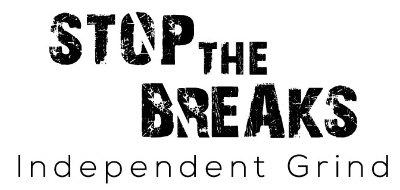
Choosing a microphone involves understanding the different types, specifications, and build quality, among other aspects. Selecting the correct model for your recording studio can be tricky. This challenge may increase if it’s your first time searching for your unique setup’s best microphone.
In this article, you’ll know some tips to help you choose the ideal recording microphone. Also, you should have an idea of the model to purchase once you reach the end.
Know The Different Microphone Types
Every microphone, regardless of build quality or price range, can convert sound waves into electric signals. But, the quality and results differ for each unit. Thus, picking the best microphone for your recording studio requires understanding the different types on the market. You can classify these devices into three major categories:
- Condenser Microphones
Condenser mics tend to be popular in many recording studios, thanks to their ability to reproduce audio accurately. Furthermore, condensers tend to be highly sensitive to sound waves, making them an excellent choice for capturing and isolating each musical instrument in the recording booth.
But, you might need to choose between large and small diaphragm condenser microphones. The former tends to possess a diaphragm of one inch or larger. This model is ideal if you want strong low-frequency responses.
Conversely, small-diaphragm condensers have diaphragms under one inch. Also known as ‘pencil mics,’ small condensers are thin and compact, making them ideal for small recording studios. Also, small diaphragm condenser microphones tend to handle high sound pressure levels better than their larger counterparts. Thus, these mics are ideal for capturing the audio from snare drums and loud guitar cabinets.
- Dynamic Microphones
Dynamic mics are excellent for capturing audio from vocals and specific instruments in relatively any room ambiance. Hence, consider purchasing dynamics if your bedroom is also your home recording studio.
But, dynamic microphones aren’t as sensitive as other mic types, so sound quality and loudness may suffer. Still, dynamics tend to be excellent for live performances since they are less likely to break or distort audio.
- Ribbon Microphones
Ribbon mics tend to be the rare cousins of condensers and dynamics. It’s because you might see these models more in the 1950s than in modern times.
Moreover, ribbons tend to be expensive and fragile. Also, these microphones can’t take high sound pressure levels, which means strong gusts of wind can break their aluminum ribbons easily.
Nonetheless, ribbon models are ideal for vintage recording setups or music producers who yearn for classic-sounding audio.
Note that the best recording microphone should coincide with the instruments playing in the studio. For example, dynamic microphones are excellent for voiceovers and podcasts. On the other hand, condensers can be ideal options for recording drum solos and orchestral instruments. As for ribbon mics, these models can be good choices for woodwinds and violins.
Check And Understand The Specs
It’s time to view the specs after selecting the microphone type for your recording studio. Acquiring some essential knowledge on microphone specifications will help you choose the best mic that fits your unique needs. Some of the specs you may see on microphone descriptions are:
- Polar Pattern
A microphone’s polar pattern is its field of sensitivity. For example, an omnidirectional mic can capture and respond to sounds coming from relatively any direction. But, a unidirectional model can record audio from one direction.
Note that omnidirectional models might be more expensive than unidirectional variants. So, don’t forget to consider your budget when choosing recording microphones.
- Frequency Response
The frequency response is the microphone’s ability to pick up audio. Manufacturers display this element as a range of figures. For example, a model might have a frequency response range of 80 Hz to 15 kHz. That scale is an excellent choice for a vocal microphone. But, if you want to record sounds from instruments like snare drums, consider choosing a mic with a frequency response range of 50 Hz to 15 kHz.
- Sensitivity
Different microphone types have varying sensitivity levels. Mic sensitivity is the measurement of the device’s ability to convert acoustic pressure or sounds to electric voltage. Microphones with high audio sensitivity tend to need less pre-amplification than variants with low sensitivity.
Final Word
If you want to record audio like a pro, you’ll need the best microphone. But, the term ‘best’ is relative to each user. Find the best mic for your recording studio by following the tips mentioned in this article. It should be in your best interest to take your time to choose the right model to avoid costly mistakes.



